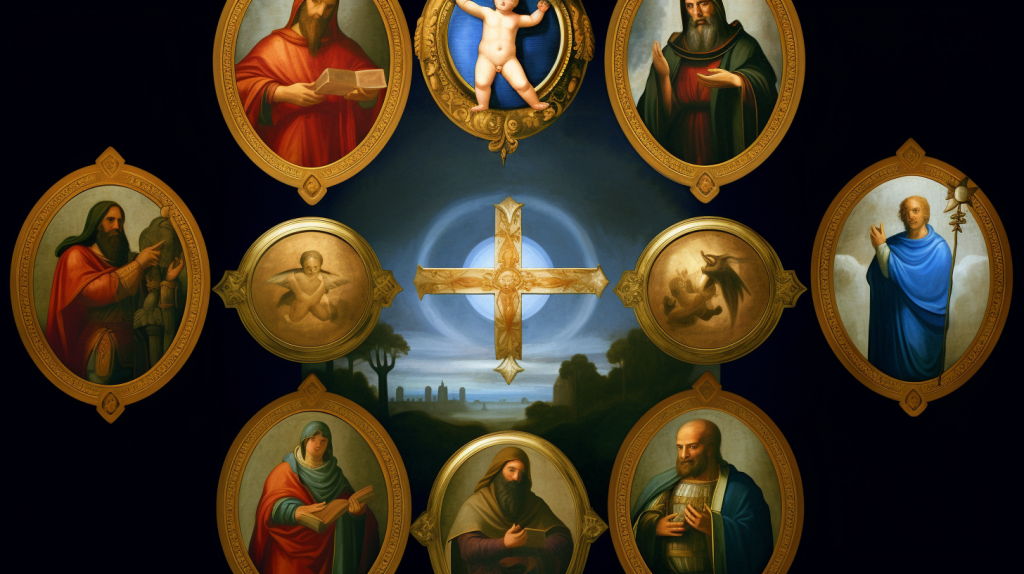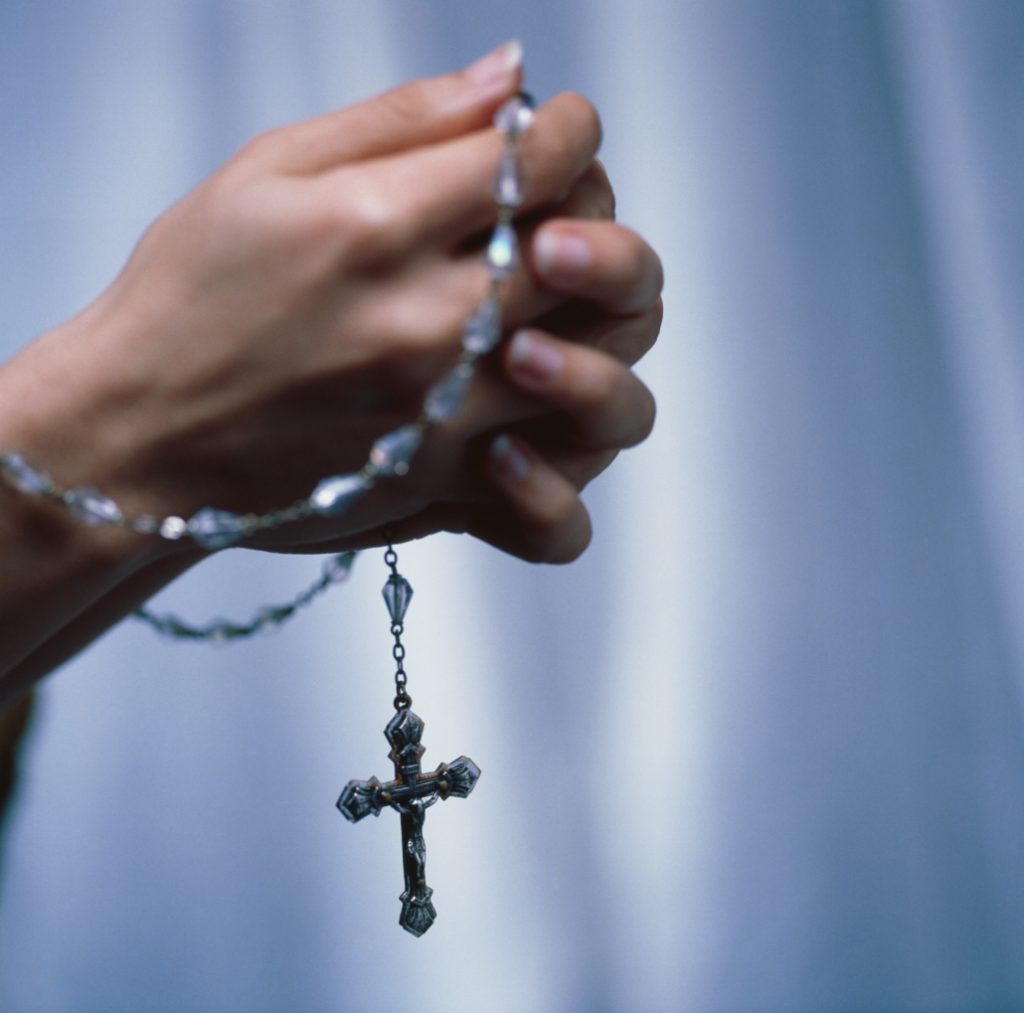The Symbol of Christianity: Delving into its Profound Meaning and Enduring Significance
Christianity, one of the world’s largest religions, is rich in symbolism. These symbols hold deep meaning and significance within the various branches of Christianity. From the iconic cross to the gentle dove, each symbol tells a story and represents important aspects of the faith. In this article, we will explore some of the most prominent symbols of Christianity, their origins, and their symbolism.
The Crucifix / Cross: A Powerful Emblem of Sacrifice
At the center of Christianity stands the cross, a powerful symbol that represents the crucifixion of Jesus Christ and his ultimate sacrifice for humanity. Jesus, carrying the heavy burden of the cross, walked a long and arduous journey to his crucifixion. This act of selflessness and love became the foundation of the Christian faith. The cross, therefore, symbolizes not only the burden Jesus carried but also the redemption and forgiveness that his sacrifice brings to all Christians.

The cross holds various meanings and interpretations, depending on the individual. To some, it represents hope, while to others, it signifies salvation. The crucifix, which depicts Jesus on the cross, is a poignant reminder of his suffering and the depth of his love for mankind. It serves as a constant reminder of the central message of Christianity – the triumph of life over death and the promise of eternal salvation.
A Dove: The Symbol of the Holy Spirit
In Christian iconography, the dove is a prevalent symbol often associated with the Holy Spirit. Its significance is rooted in the biblical account of Jesus’ baptism by John the Baptist. As Jesus emerged from the waters, a dove descended upon him, representing the presence of the Holy Spirit. This event marked the beginning of Jesus’ ministry and the empowerment of his disciples with the Holy Spirit.

The dove is also linked to the story of Noah’s ark, where it carried an olive branch, symbolizing peace and a new beginning. In Christian symbolism, the dove represents purity, innocence, and peace. It is a visual representation of the Holy Spirit’s gentle guidance and the believer’s inner peace through faith.
A Rosary: A Path to Prayer and Contemplation
A rosary is a string of beads with a crucifix, often used by Roman Catholics as a tool for prayer and reflection. Each bead represents a specific prayer, and the repetition of prayers facilitates meditation and contemplation. The rosary consists of five decades, with each decade focusing on a specific event from the life of Jesus and the Virgin Mary.
The rosary serves as a tangible reminder of the power of prayer and the importance of seeking spiritual connection. It allows believers to engage in a rhythmic and meditative prayer practice, fostering a deeper connection with God and the core teachings of Christianity.
The Lamb: A Symbol of Innocence and Sacrifice
Throughout the Bible, Jesus is often referred to as the Lamb of God. The image of a lamb represents innocence, purity, and sacrifice. In the Old Testament, lambs were frequently offered as sacrifices to atone for sins. Jesus, the sacrificial Lamb, gave his life to redeem humanity from sin and offer salvation.

Depicting Jesus as a lamb serves as a reminder of his selfless sacrifice and the purity of his character. It emphasizes the importance of humility, gentleness, and self-sacrifice in the Christian faith. The lamb symbolizes the transformative power of Jesus’ sacrifice and the hope it brings for eternal life.
The Eucharist: Communion with the Divine
The Eucharist, also known as Holy Communion or the Lord’s Supper, holds great significance in Christianity. It is a sacrament that commemorates the Last Supper, where Jesus shared bread and wine with his disciples before his crucifixion. During this gathering, Jesus declared that the bread represented his body, and the wine symbolized his blood, which would be shed for the redemption of humanity.

The Eucharist serves as a means of spiritual nourishment and communion with God. It is believed that through the consecration of bread and wine, they become the body and blood of Jesus Christ. This transformation, known as transubstantiation, allows believers to partake in a sacred union with the divine, reinforcing their faith and fostering a deeper connection with Christ.
Resources for Further Exploration
To deepen your understanding of Christianity and its symbols, there are numerous resources available. Here are some recommended materials that can aid in teaching and exploring this fascinating subject:
- Christian Beliefs Teaching and Task Setting PowerPoint: This comprehensive PowerPoint presentation offers an in-depth exploration of Christian beliefs and teachings. It provides a solid foundation for understanding the core principles of Christianity.
- KS2 Christian Symbols Differentiated Activity Sheet: This activity sheet offers an interactive way for children to explore various Christian symbols, including those mentioned in this article. It encourages critical thinking and reflection on the significance of these symbols.
- Comparing Islam and Christianity Activity Sheet: It is essential to foster an understanding of different religions. This activity sheet enables children to compare and contrast Islam and Christianity, highlighting both their similarities and differences.
- RE Christianity Quotes Display Posters: These display posters present key quotes and teachings from Christianity, offering a visual aid to deepen children’s knowledge and understanding.
Conclusion
Symbols play a vital role in Christianity, encapsulating profound meanings and representing core beliefs. From the cross to the dove, each symbol tells a story and serves as a reminder of the central teachings of the faith. The crucifix reminds believers of Jesus’ sacrifice and the hope it brings, while the dove symbolizes the presence of the Holy Spirit and inner peace. The rosary facilitates prayer and contemplation, while the lamb represents innocence and sacrifice. Finally, the Eucharist provides a tangible way to commune with the divine.
By exploring these symbols, we gain a deeper appreciation for the rich and multifaceted nature of Christianity. They serve as visual reminders of the faith’s central tenets, guiding believers on their spiritual journey. Through continued exploration and understanding, we can foster a greater appreciation for the symbolism that lies at the heart of Christianity.



